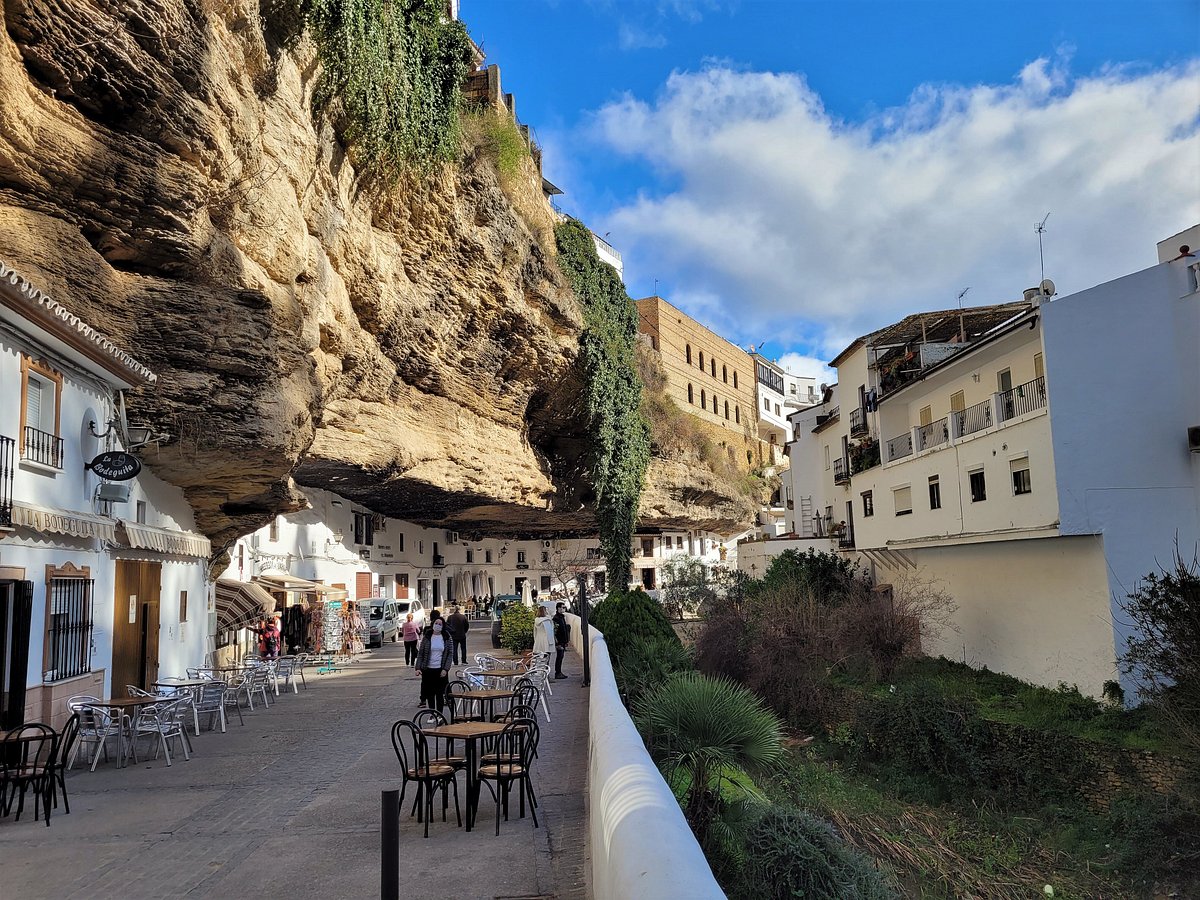A Village Sheltered by Stone
Tucked deep in the province of Cádiz, Andalusia, lies a village unlike any other in the world Setenil de las Bodegas.
Here, homes, cafes, and streets are carved directly into and beneath massive rock overhangs of the Rio Trejo gorge.
The result is a surreal townscape where solid stone forms the ceiling of people’s living rooms, restaurants, and bars.
How Setenil de las Bodegas Was Formed
The village sits within a narrow river valley, naturally shaped by the erosion of the Trejo River over thousands of years.
Instead of removing the rock, early settlers used it as part of their architecture building into the existing cliff walls for natural insulation and protection.
- In summer, the stone keeps homes cool and shaded.
- In winter, it provides warmth and shelter against harsh winds.
This ingenious integration between nature and architecture gives Setenil its signature appearance: streets half-hidden under rock, blending perfectly with the landscape.
A Brief History
The site has been inhabited since prehistoric times, but the modern village emerged during the Moorish occupation of Spain (around the 12th century).
Its name, Setenil, is believed to come from the Latin Septem Nihil meaning “seven times nothing” a reference to how many times Christian forces failed to capture it before finally succeeding in 1484.
After the reconquest, residents began cultivating the fertile land around the river valley, storing wine and olive oil in cool underground cellars giving rise to “de las Bodegas” (of the wineries).
Architecture: Where Rock Meets Whitewashed Walls
Unlike most Andalusian villages that feature hilltop layouts, Setenil’s beauty comes from its horizontal integration into the canyon.
The whitewashed facades, typical of southern Spain, contrast beautifully with the dark, rugged rock above them.
Key highlights:
- Calle Cuevas del Sol (“Caves of the Sun”) – The most famous street, lined with cafes beneath a massive overhanging rock.
- Calle Cuevas de la Sombra (“Caves of the Shade”) – Narrow lanes completely covered by stone, creating a cave-like tunnel.
- The Castle of Setenil – A 12th-century fortress tower offering panoramic views of the town and surrounding valleys.
What to See and Do
- Walk beneath the rock roofs – Feel the surreal experience of touching the ceiling of nature.
- Visit local tapas bars – Enjoy authentic Andalusian cuisine like chorizo al vino and aceitunas de Setenil.
- Explore the viewpoints – The Mirador del Carmen offers the best photo of the village nestled under the cliffs.
- Stay overnight – Several guesthouses are built right into the rock walls, offering a cool, natural atmosphere.
How to Get There
Setenil de las Bodegas is about:
- 15 km from Ronda
- 120 km from Málaga
- 150 km from Seville
You can reach it by car or bus. The drive itself through the Andalusian countryside is worth the trip winding through olive groves, vineyards, and whitewashed villages.
Best Time to Visit
The ideal months are April to October, when temperatures are warm but not extreme.
For photography, visit in the late afternoon, when sunlight highlights the rock formations while the streets remain shaded creating a perfect contrast between stone, shadow, and white walls.
Preservation and Tourism
Despite its fame, Setenil remains a living village, not just a tourist site. About 3,000 residents still inhabit its cave houses.
Local efforts ensure tourism remains sustainable preserving the unique geological formations and historic charm.
A Village Shaped by Stone and Time
Setenil de las Bodegas is more than a picturesque curiosity; it’s a living example of how humans and nature can coexist in harmony.
Walking beneath its colossal rock ceilings feels like stepping into another world one sculpted by time, carved by rivers, and perfected by human ingenuity.
If you ever explore southern Spain, don’t miss this breathtaking “village under a rock” one of Andalusia’s most remarkable wonders.





